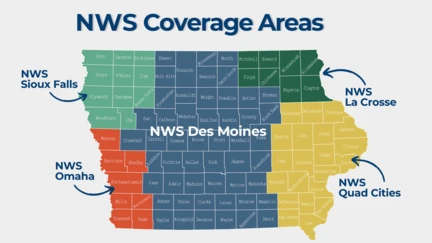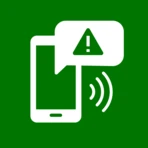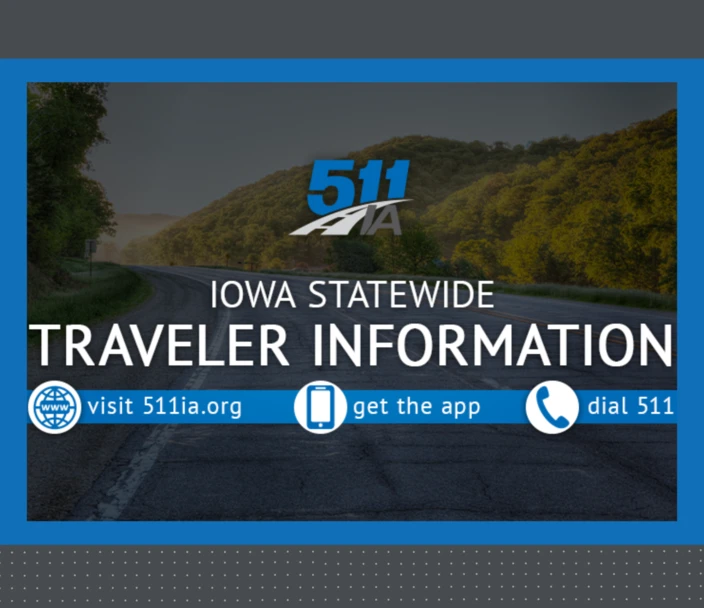How to obtain weather and safety information in your community
Having multiple sources for information can help you know what is going on in your community and provide notification of possible weather or safety issues you may face. Sign up for local alerts, enable WEA alerts on your mobile phone, and tune into local news and radio for current alerts in your community. You may also want to check out local city and county websites, such as your county emergency management agency. They are a trusted source for up-to-date information.
Wireless emergency alerts (WEAs)
Wireless emergency alerts (WEAs) are used to send concise, text-like messages to WEA-capable mobile devices during emergency situations. WEAs can be sent by state and local public safety officials, the National Weather Service, the National Center for Missing and Exploited Children and the President of the United States.
- WEAs look like text messages but are designed to get your attention with a unique sound and vibration repeated twice.
- You are not charged for receiving WEAs and there is no need to subscribe.
Emergency alert system (EAS)
The Emergency Alert System (EAS) is a national public warning system commonly used by state and local authorities to deliver important emergency information, such as weather and AMBER alerts, to affected communities. EAS Participants – radio and television broadcasters, cable systems, satellite radio and television providers, and wireline video providers – deliver local alerts on a voluntary basis, but they are required to provide the capability for the President to address the public during a national emergency.
NOAA weather radio
Investing in a National Oceanic and Atmospheric Administration (NOAA) Weather Radio is another way to receive weather and other emergency alerts, and you can program them so that you receive only the alerts for your county or specific counties.
Warning sirens
Your community may use outdoor warning sirens to alert the public of severe weather. Outdoor sirens are controlled at the local level. Typically a local emergency management agency or county sheriff office will oversee local sirens.
Outdoor siren facts
- Guidelines for sounding sirens may vary. Sirens may not always be for a tornado warning. Many agencies will use sirens for multiple hazards, and a siren should be a call to take shelter and seek out more information.
- Outdoor warning sirens are tools to warn people who are outdoors to take immediate action. Though some people who are very close to an outdoor warning siren may hear it while they are inside a building they are not designed as an indoor system.
- Sirens are the last link in the warning chain, not the first. Other methods of awareness and warning should be utilized.
- Sirens are just one element in a larger public warning system. No single warning element is effective at all times and in all circumstances. Many tools must be used to make sure that people get proper timely warning to take shelter.
- Iowans are encouraged to have multiple ways to be weather-aware:
- Know the signs of severe weather and what to do when it occurs.
- Check your mobile phone settings to ensure wireless emergency alerts (WEA) weather alerts are enabled.
- Sign up for Alert Iowa to get local and weather alerts across Iowa at Alert.iowa.gov.
- Get a NOAA weather radio as a backup.
Weather advisories, watches and warnings
Weather advisories, watches and warnings are issued by your local National Weather Service (NWS) office. Each office knows the local area and and often collaborates with local partners to determine when an alert should be issued based on local criteria. There are five National Weather Service offices serving the State of Iowa.
- NWS Sioux Falls - Serving Northwest Iowa
- NWS Omaha - Serving Southwest Iowa
- NWS Des Moines - Serving Central Iowa
- NWS La Crosse - Serving Northeast Iowa
- NWS Quad Cities - Serving Southeast Iowa

Listed below are links to hazards that regularly affect the state of Iowa. Find out the difference between each hazard's advisories, watches and warnings so you are ready to take the actions required to stay safe.



